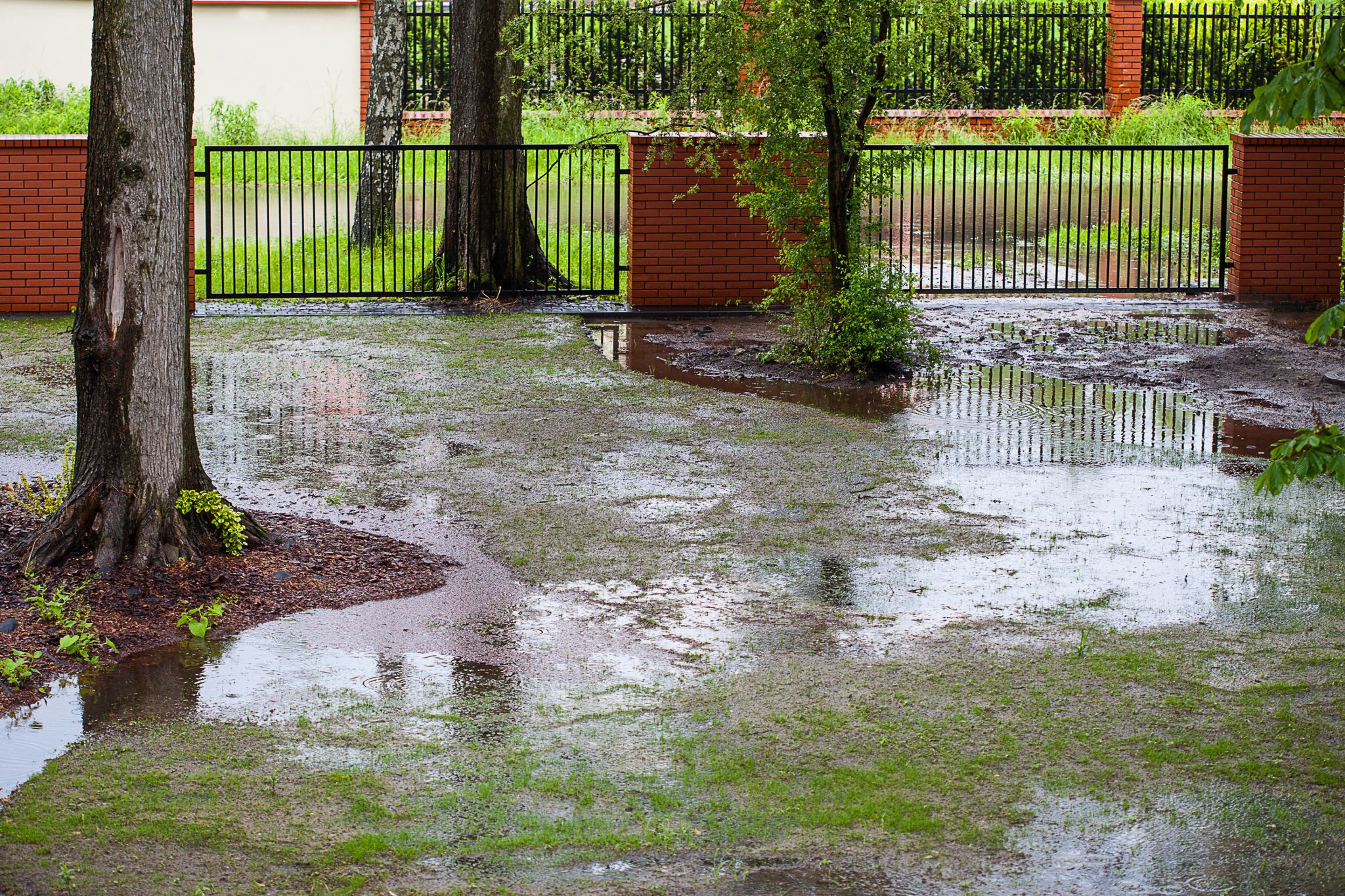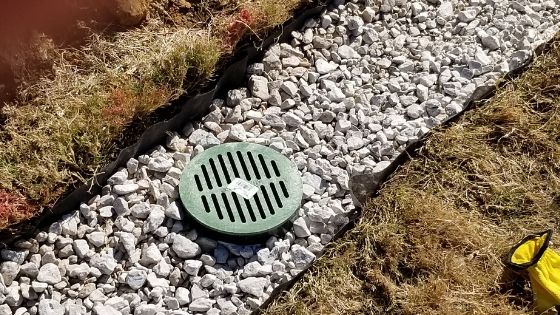Indicators Your Home Needs a Portland French Drain Right Now
Indicators Your Home Needs a Portland French Drain Right Now
Blog Article
The Necessary Guide to Keeping Your French Drainpipe for Durable Performance
Keeping your French drainpipe is essential to its efficiency and your residential property's protection. Routine checks can save you from expensive fixings and water damages. You'll need to know what indicators to search for and just how frequently to examine your system. Plus, comprehending the cleansing procedure can make a substantial difference. Let's explore the vital steps for ensuring your drain operates well for many years ahead.
Comprehending the Function of a French Drain
A French drainpipe is a crucial element in managing water around your home. It guides excess water away from your foundation, protecting against flooding and damage. When heavy rain falls, the drainpipe gathers water via a perforated pipe hidden in gravel. This system permits water to flow freely, decreasing pressure on your cellar walls and minimizing the risk of leaks.You could ask yourself how it functions in technique. As water saturates the dirt, gravity pulls it towards the drain. The perforated pipe records this water, delivering it to an assigned drainage area or storm sewage system. This procedure maintains your yard dry and secures your home's architectural integrity.Understanding how a French drainpipe features is vital to valuing its value. By successfully transporting water away, it helps keep a risk-free and completely dry living environment. Maintaining your French drainpipe in leading problem guarantees you prevent expensive repair work down the line.
Regular Evaluations: What to Search for
When you're checking your French drainpipe, start by checking for any type of obstructions that could be blocking water circulation. Focus on signs of surface erosion around the drain, as this can show possible problems. Regular evaluations will help maintain your drain system operating efficiently.
Clogged Drainpipe Evaluation
Exactly how can you inform if your French drainpipe is obstructed? Initially, watch for water pooling in your lawn, particularly after hefty rainfall. That's a red flag if you notice areas where water gathers instead of draining pipes. You must additionally check the drain electrical outlet; if water isn't spurting as it should, there's most likely a blockage. Pay attention for unusual gurgling sounds, which can show trapped air. Furthermore, check the drain's surface area for any plants growth, as origins can obstruct the system and infiltrate. If you scent musty smells, it could aim to stagnant water caused by a blockage. Regularly examining these indicators can aid you maintain your French drainpipe efficiently and prevent costly fixings.
Surface Erosion Check

Cleaning Your French Drain: Step-by-Step Guide
Cleaning your French drainpipe is vital for keeping it functioning effectively. You'll need some particular devices and a clear procedure to ensure whatever runs efficiently. Let's go through the steps and ideas for keeping your drain properly.
Tools You'll Need
To take on the job of cleansing your French drainpipe properly, you'll wish to gather a couple of essential devices. Initially, get a sturdy set of gloves to shield your hands from particles and sharp items. A small shovel or trowel will aid you eliminate dust or blockages around the drain. For clearing out the interior, a plumbing's snake or a high-pressure water nozzle can be unbelievably valuable. You'll additionally require a container for gathering any type of particles you pull out. Lastly, having a garden pipe accessible will make it less complicated to rinse out the drain and assure it's streaming efficiently. With these tools prepared, you'll be established for a detailed cleaning session!
Cleansing Process Actions
Start by reviewing the area around your French drain for any visible particles or blockages. Remove fallen leaves, branches, or dust that might block water circulation. Next, inspect the inlet and electrical outlet areas; clear any type of obstructions to assure appropriate drainage. Make use of a garden hose to purge the drain, routing water right into the inlet. This assists dislodge any type of built up sludge or debris. Take into consideration utilizing a plumbing professional's snake to break them up if you observe relentless obstructions. After cleansing, inspect the gravel around the drain; renew it if it's gotten rid of. Finally, validate the drain covers are undamaged and securely in position to stop particles from entering. Routine cleaning maintains your French drain working effectively.
Upkeep Regularity Tips
While regular maintenance is necessary for your French drain's long life, recognizing just how frequently to maintain it can make all the difference. Preferably, you ought to evaluate your French drainpipe a minimum of two times a year, ideally in spring and fall. After heavy rains or snowmelt, look for clogs or debris. If you observe any standing water, it's time to cleanse your drain.In areas with hefty foliage, even more regular maintenance-- about every 3 months-- might be required. Additionally, take into consideration cleaning your French drainpipe after major storms or if you observe water pooling in your yard. By remaining proactive, you'll ensure your French drain functions effectively and safeguards your property from water damage. Routine checks will conserve you money and time in the lengthy run.
Recognizing Typical Concerns and Their Solutions
When you discover water merging in your lawn or damp places in your cellar, it's important to recognize common issues with your French drain and carry out effective remedies. One frequent problem is clogging, often triggered by debris like fallen leaves or sediment. To fix this, you can use a pipes snake or a high-pressure water jet to clear blockages.Another concern may be inappropriate slope. Water will not stream away from your home if your drain isn't sloped appropriately. You can change the incline by excavating and rearranging the drain pipe.Lastly, check for damage or cracks in the drain itself. If you locate any, replacing the harmed areas is essential for peak performance. By resolving these issues quickly, you'll help assure that your French drainpipe remains to function properly, protecting your property from water damages and preserving a completely dry, safe atmosphere.
Seasonal Maintenance Tips for Your French Drain
Addressing typical issues with your French drain is simply the primary step in assuring its long-lasting performance. Seasonal maintenance is essential for peak efficiency. In the springtime, clear away leaves and debris that may have gathered throughout winter. Check look at this website for any clogs in the outlet or catch basin, as water needs a clear course to move freely.During summer season, examine your drain for any signs of resolving or shifting soil. Ensure it's still degree and operating correctly. As autumn techniques, clear out any type of fallen leaves to protect against clogs before winter months arrives.In winter, watch for freezing temperatures. Make sure your drain isn't at threat of cold if you live in a chilly climate. Shielding revealed pipelines can aid. Routine checks and timely maintenance can avoid pricey fixings and maintain your French drain functioning properly year-round. Remain proactive and delight in assurance recognizing your drain system remains in good form!
When to Call in a Professional
When to call in a professional can conserve you time and avoid more damage to your French drain, understanding. It's a clear indicator that your drainpipe might be obstructed or harmed if you see consistent standing water in your yard. Don't neglect strange smells, as they can indicate sewer backup or decay, which calls for instant attention.If you find that your drain isn't operating properly after efforts to clean or maintain it, it's time to get to out for expert aid. Additionally, if you're not sure concerning the underlying problems or lack the required devices, employing an expert can give peace of mind.Finally, if your French drain is old or has experienced substantial damage, expert evaluation can determine whether fixings or full substitute is required. Trust fund the experts to guarantee your drainage system works efficiently for many years ahead.
Tips for Avoiding Future Drainage Problems
To keep your French drainpipe functioning successfully, consistently examining and preserving it can make all the difference. Begin by getting rid of debris, leaves, and dust from the surface area and drainpipe openings. This protects against clogs that can lead to water back-up. Check the crushed rock around the drainpipe; if it's compressed more information or worn down, consider adding fresh crushed rock to keep excellent flow.Next, draw away water away from your drain by making certain seamless gutters and downspouts are clear and directing water a minimum of 3 feet far from your structure. Regularly inspect for any indications of damage or sagging. If you see issues, address them immediately.Finally, think about installing a catch or a filter container to trap larger debris prior to it gets in the drainpipe. By staying positive with these pointers, you'll lessen the risk of future drainage troubles and maintain your French drainpipe in top shape.
Regularly Asked Questions
The length of time Does a French Drain Usually Last?
A French drainpipe normally lasts around 30 to 40 years, relying on the materials made use of and upkeep (Portland French Drain). If you stay on par with regular checks, you can expand its life-span even better
Can I Install a French Drain Myself?
Yes, you can set up a French drainpipe yourself if you have actually obtained the right devices and knowledge. Simply make sure to prepare meticulously, adhere to regional policies, and guarantee correct drain to avoid future concerns.
What Materials Are Used in a French Drainpipe?
You'll need perforated pipe, crushed rock, landscape material, and a solid drainage pipe for your French drainpipe. These materials aid reroute water wikipedia reference effectively, avoiding flooding and keeping your residential or commercial property secure and dry from water damages.

Is a License Required to Set Up a French Drain?
You'll likely need a permit to mount a French drain, relying on neighborhood laws. Examine with your community to ensure you adhere to any essential standards and stay clear of prospective issues during installment.
What Are the Expenses Associated With French Drain Maintenance?
Keeping a French drainpipe commonly sets you back between $100 and $500 each year. You'll require to take right into account expenditures for cleaning, fixings, and examinations. Routine maintenance aids avoid larger warranties and expenditures your system works properly for many years - Portland French Drain. When you're checking your French drainpipe, beginning by inspecting for any obstructions that may be obstructing water circulation. By remaining positive, you'll guarantee your French drainpipe functions properly and safeguards your property from water damages. When you notice water pooling in your backyard or damp areas in your cellar, it's important to determine common concerns with your French drain and carry out effective options. You can readjust the slope by excavating and repositioning the drainpipe pipe.Lastly, check for damages or cracks in the drainpipe itself. Examine the gravel around the drainpipe; if it's compressed or worn down, take into consideration adding fresh crushed rock to keep optimal flow.Next, draw away water away from your drain by making sure downspouts and rain gutters are clear and routing water at least three feet away from your foundation
Report this page